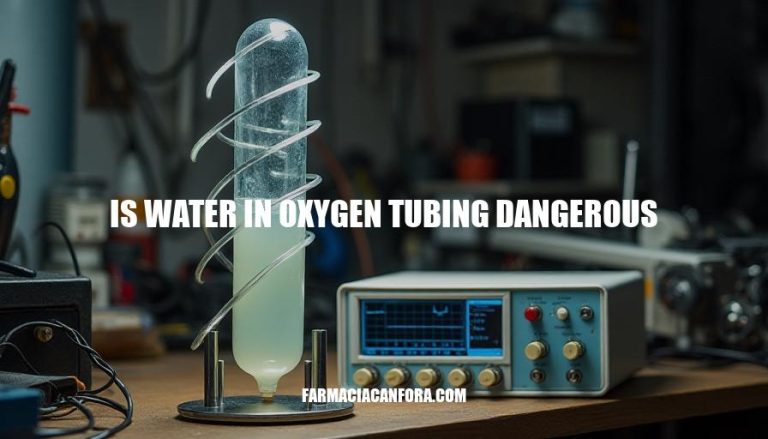


Oxygen therapy helps people who have trouble breathing or getting enough oxygen into their blood. It’s used for conditions like COPD, pneumonia, and heart failure. The tubing that delivers oxygen is really important – it needs to be clear so the oxygen can get through safely.
Water in oxygen tubing can pose several dangers, including the risk of infection, difficulty in breathing, and damage to the equipment.
Risk of Infection: Water in oxygen tubing creates a moist environment that can promote the growth of bacteria and mold. For example, a study published in HomeCare Magazine highlighted that improper maintenance of oxygen equipment, including the presence of water, can lead to respiratory infections. Patients with weakened immune systems or chronic respiratory conditions are particularly vulnerable to these infections.
Difficulty in Breathing: Excess water in the tubing can obstruct the flow of oxygen, leading to shortness of breath or hypoxia (oxygen deprivation).
A report from explained that water droplets entering the nasal cavity can cause discomfort and respiratory distress, especially for users with respiratory sensitivity problems.
Damage to Equipment: Water can corrode the inner walls of the oxygen tubing and other components of the oxygen delivery system, reducing their efficiency and lifespan. The Zhengzhou Olive Electronic website mentioned that excessive moisture can damage the delicate components of oxygen delivery systems, affecting their performance.
In summary, water in oxygen tubing is more than just a nuisance; it can lead to serious health risks and equipment damage. Regular maintenance, such as inspecting and drying the tubing, using water traps, and controlling room temperature, is essential to mitigate these dangers.
Water in oxygen tubing poses significant dangers, including the risk of infection, difficulty breathing, and damage to equipment.
Moisture can promote bacterial growth, obstruct oxygen flow, and corrode delicate components.
Patients with weakened immune systems or chronic respiratory conditions are particularly vulnerable to these risks.
Regular maintenance, such as inspecting and drying the tubing, using water traps, and controlling room temperature, is crucial to mitigate these dangers.
Understanding whether water in oxygen tubing is a concern is essential for ensuring safe and effective treatment.
Proper vigilance and maintenance can help prevent serious health risks and equipment damage.